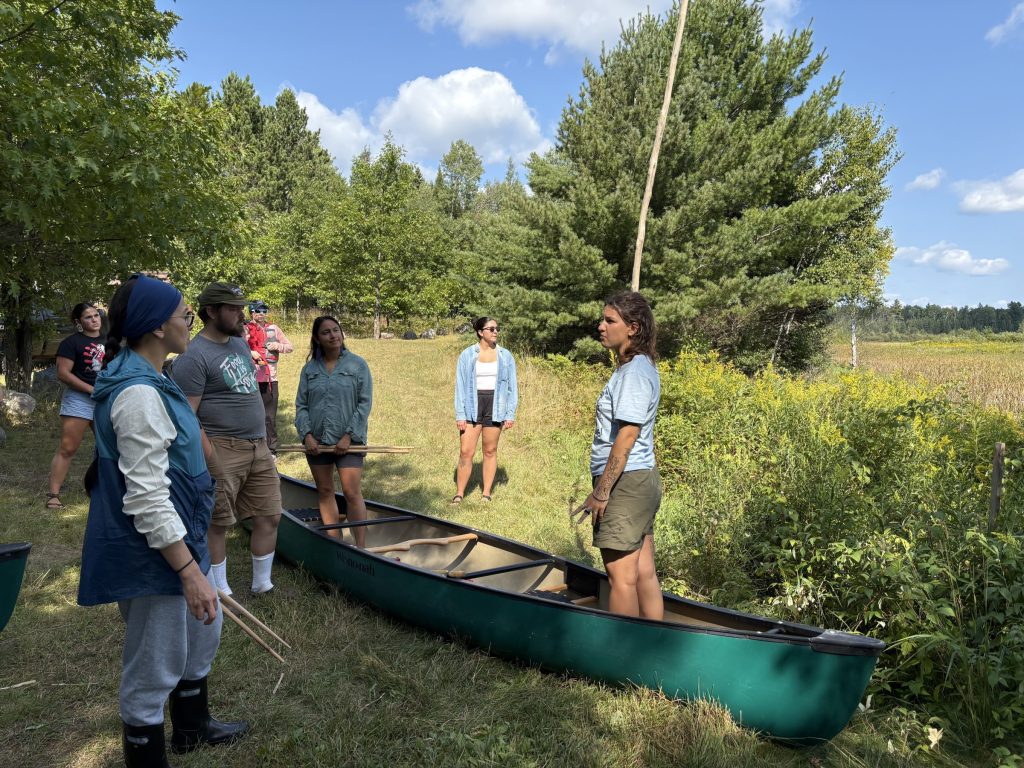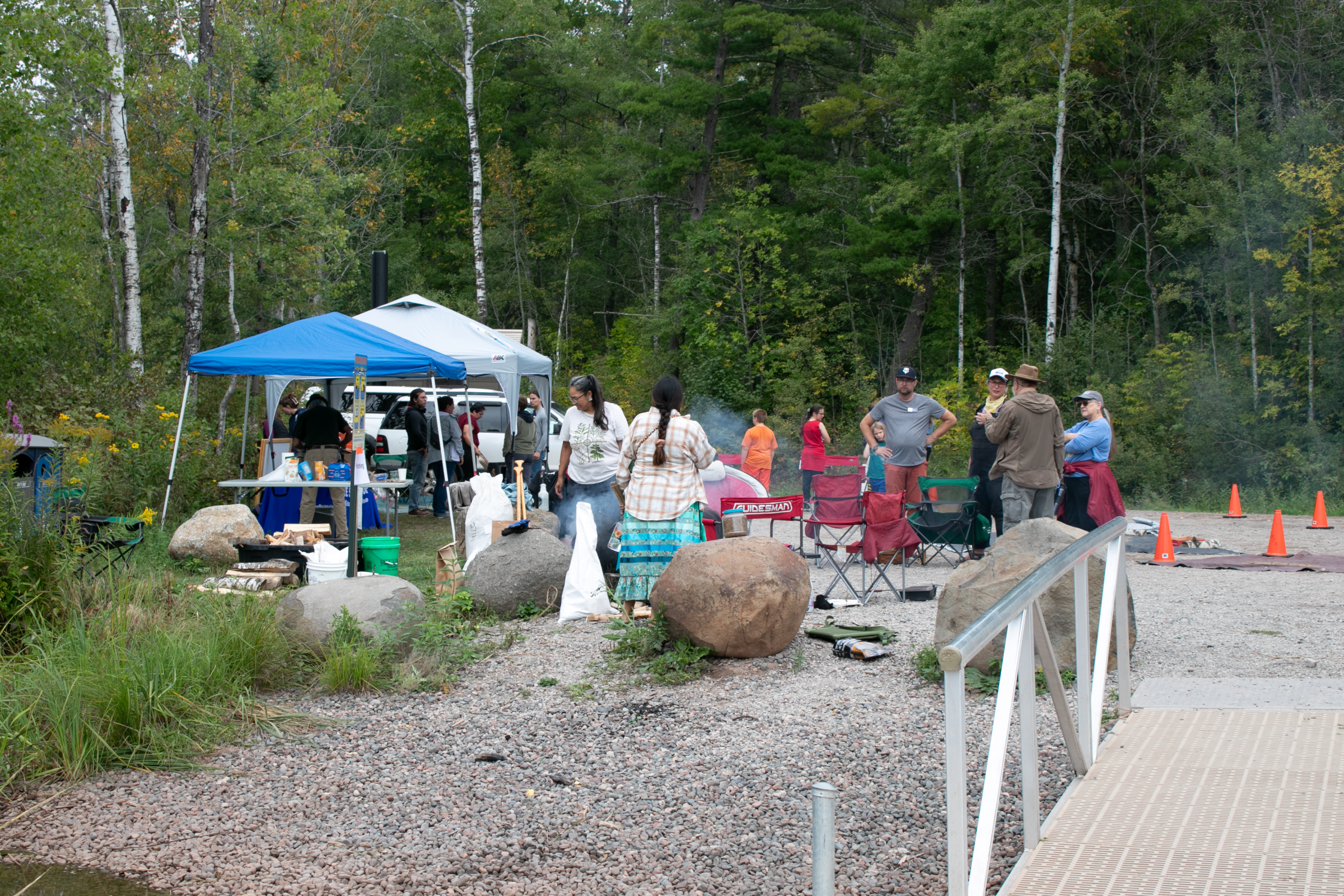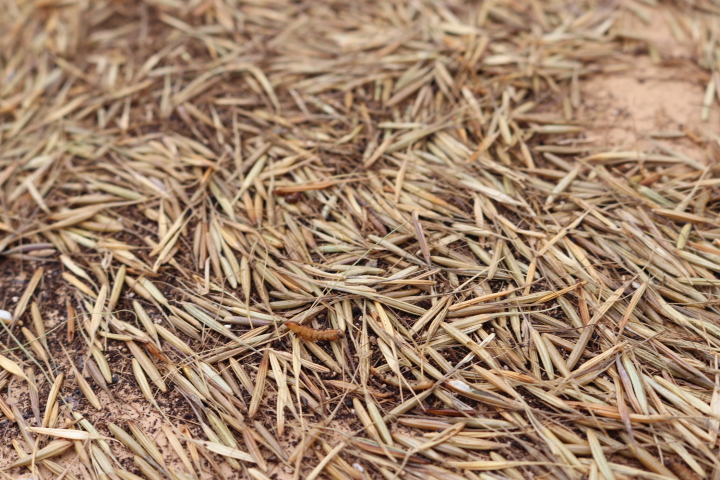The Indigenous Food Systems Resilience Project is working across the state to support wild rice camps, the Indigenous practice of bringing people together to learn about and share the work of harvesting and processing wild rice. The ricing season is short in the Great Lakes region, usually only a few weeks. Since wild rice is typically processed right away, early September is a busy time for ricers. Many hands make the work easier, and gathering at a rice camp is an important opportunity for people to learn from wild rice – Manoomin in the Ojibwe language and Manōmaeh in the Menominee language. It’s a time for elders and experienced ricers to teach others how to harvest and process this culturally important food.

The Project Team was excited to partner on the Intertribal Manoomin Camp at the North Lakeland Discovery Center in Manitowish Waters on August 29-September 1. This rice camp was co-organized by the Great Lakes Indian Fish and Wildlife Commission, UW-Madison Center for Limnology at Trout Lake Station and Agroecology Program, Lac du Flambeau Wild Rice Cultural Enhancement Program, Bad River Band Natural Resources Department, Menominee Department of Agriculture and Food Systems, National Fish and Wildlife Foundation, and Wisconsin Department of Natural Resources.

The four-day event guided over 160 participants through every step of ricing. Participants went out in canoes to harvest wild rice, using knocking sticks they made to knock the rice into the canoe and long push poles to guide the canoe through the thick rice. The group learned how to dry the rice, carved parching paddles to parch the rice over a fire to dry it out and make removing the hull easier. Some people sewed moccasins, and the group learned how to dance on the rice to remove the hulls. Others made birch bark baskets for winnowing.
Hosting the event over Labor Day weekend provided plenty of time for participants to enjoy the beautiful weather sitting outside working on their projects, connect with others and share knowledge, and enjoy many meals together. “Manoomin camp was a testament to the fact that Manoomin brings community together,” said Sagen Quale (Red Cliff Band of Lake Superior Chippewa), an organizer of the camp and graduate student in the UW–Madison Agroecology Masters Program. “Everyone who was there had the intention to strengthen their relationship to Manoomin, and to me that’s what it is all about. I’m beyond grateful to be a part of continuing tradition and sharing what I’ve learned along the way.”

The Indigenous Food Systems Resilience Project was once again a partner at Manoomin Camp on the St. Louis River Estuary near Superior on September 13. The camp was a collaboration between the UW-Superior Indigenous Cultures Resource Center, 1854 Treaty Authority, and the Lake Superior National Estuarine Research Reserve with funding from the Indigenous Food Systems Resilience Project. The goal of the camp was to engage UW-Superior students and community members in learning from elders and harvesting rice on the estuary.

The Indigenous Food Systems Communications Team also joined in on the activities to capture footage and interviews for an upcoming video highlighting the ecotoxicology research the Manoomin Team is leading to test for heavy metals and PFAS in restored wild rice in the estuary. This project is in partnership and collaboration with the Manoomin Stewardship Team, which includes the 1854 Treaty Authority, Great Lakes Indian Fish and Wildlife Commission, Fond du Lac Band of Lake Superior Chippewa, St. Croix Band of Chippewa Indians, Wisconsin and Minnesota Departments of Natural Resources, Minnesota Pollution Control Agency, Minnesota Land Trust, cities of Duluth, MN and Superior, WI, and the Lake Superior National Estuarine Research Reserve. To date, the group has reseeded at least 88,000 pounds of Manoomin into the St. Louis River estuary.
Duluth and Superior community members dropped by the rice camp throughout the day to harvest rice from canoes, learn how to parch rice over the fire, dance on the rice to separate the hulls, and winnow using baskets. “I am overjoyed at the amount of people that attended to learn about Manoomin,” said Ashla Ojibway (Fond du Lac Band of Lake Superior Chippewa), Research Technician on the Indigenous Food Systems Manoomin Team and student at UW–Superior.

The cool early fall day made the lunch of bison stew with wild rice extra delicious. Other animals love to eat wild rice too, including rice worms (a moth caterpillar, Apamea apamiformis), who are ubiquitous in the wild rice harvesting process. Not to worry, since spiders (long jawed orbweavers, Tetragnatha species) love to eat the rice worms! A canoe full of wild rice is usually full of rice worms and spiders too, an exciting arthropod experience reminding us of our interconnection with all other beings. “The kids are always eating the rice worms”, Ashla noted. “I, personally, have not eaten a live rice worm. I prefer mine toasted. It tastes just like popcorn, a nice little crispy snack”. Ricers try to remove the worms before parching the rice, but often miss a few that get parched along with the rice.
At both events, participants were able to build connections with each other and with Manoomin, learn from elders and experienced ricers, and participate in the process of harvesting and processing wild rice. Ashla adds, “It makes my heart happy to share how important this being is to Indigenous peoples, the hard work that goes into processing, and how it brings us together as a community”.
This work is supported by the Institute for Rural Partnerships, project award no. 2023-70500-38915, from the U.S. Department of Agriculture’s National Institute of Food and Agriculture. Any opinions, findings, conclusions, or recommendations expressed in this publication are those of the author(s) and should not be construed to represent any official USDA or U.S. Government determination or policy.





